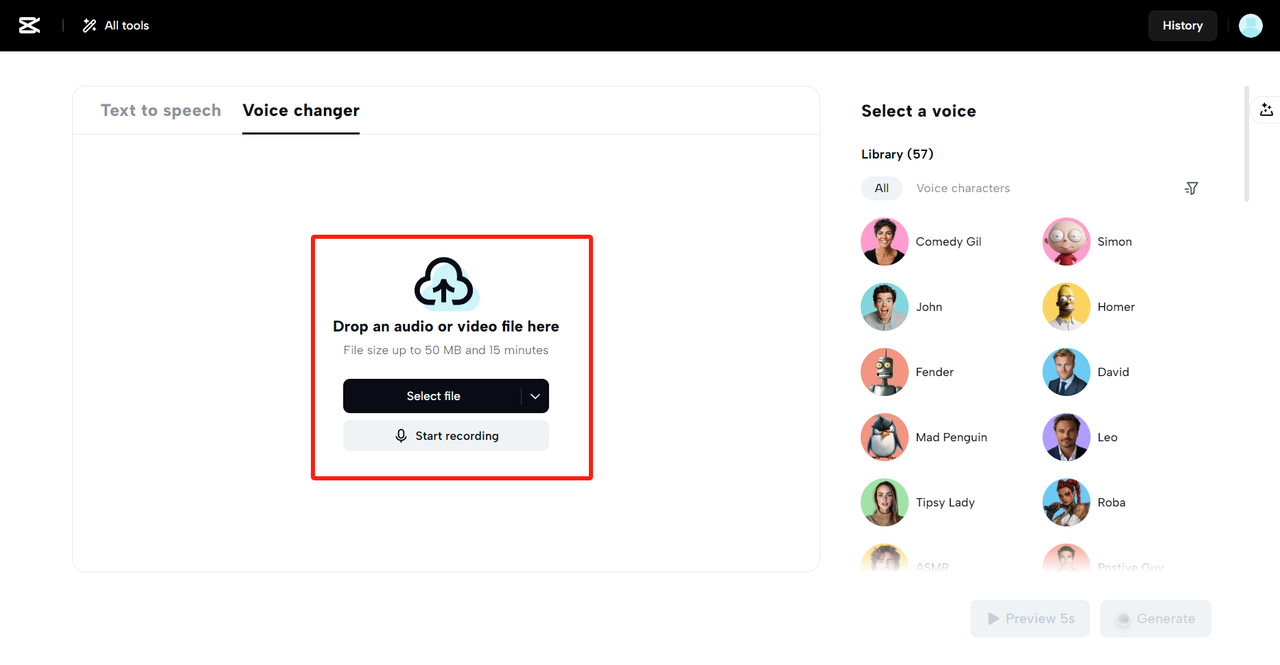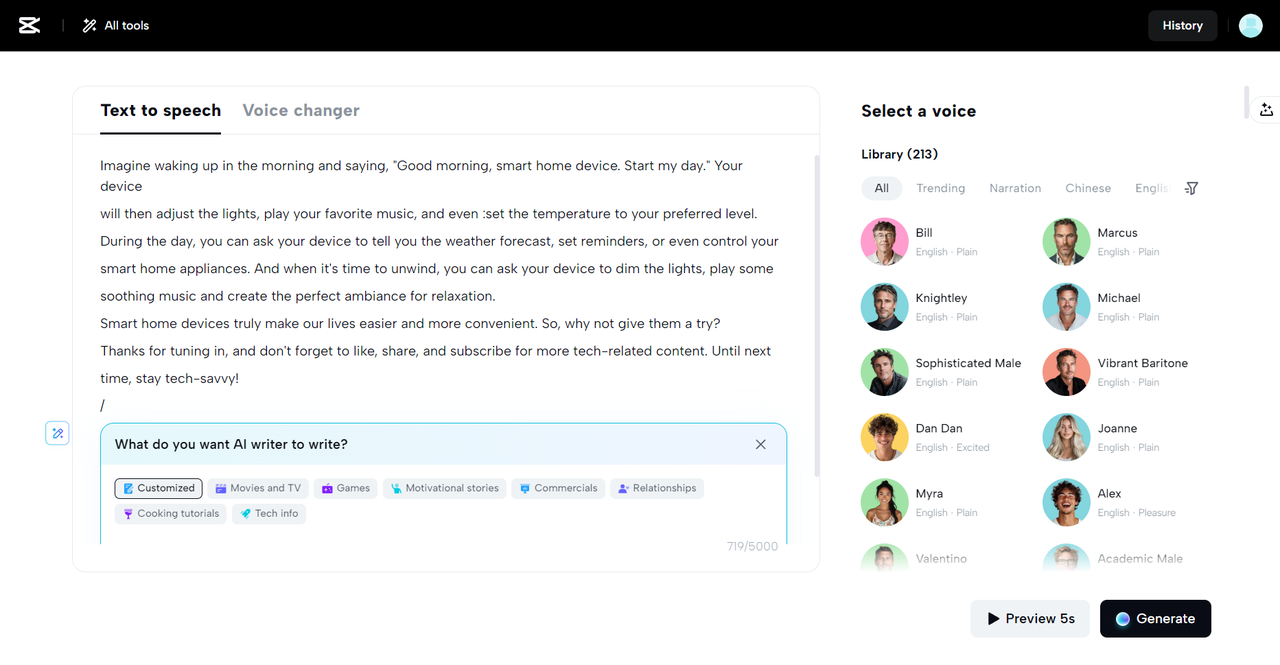
The concept of smart homes has transitioned from science fiction to reality in the past few years. With the rapid development of Artificial Intelligence (AI), smart homes are no longer a distant vision but a tangible part of everyday life. At the heart of this transformation is voice technology, a key component that is enhancing the user experience and making homes more intuitive and personalized. AI voice effects—technology that alters, customizes and synthesizes voices—are powering smart homes and Internet of Things (IoT) devices in ways that were once unimaginable.
From controlling appliances to providing real-time security alerts, AI voice effects are revolutionizing how we interact with our living spaces. But AI in smart homes is more than just convenience; it’s improving accessibility, bolstering security, and creating engaging experiences that are tailored to the unique needs and preferences of users. This post will explore the multifaceted role of AI voice effects in smart homes and how they are shaping the future of connected living.
AI Voice Technology: A Key Player in Smart Home Development
At the core of smart home evolution is the ability to control and interact with devices through voice commands. Over the years, advancements in AI have made this interaction much more sophisticated, allowing for not just basic functionality like turning on the lights or adjusting the thermostat but also more personalized and dynamic exchanges with smart devices.
AI voice effects play an essential role in the development and improvement of smart home devices. As developers seek to enhance user experience, voice modification and synthesis technologies have become invaluable tools. By using AI-powered voice changer tools, developers can test how well their smart devices recognize and respond to different vocal tones, speeds, and variations in pitch. These tools can generate a wide variety of voices, allowing for testing and optimization of voice recognition systems.
This process isn’t just about refining performance; it’s also about enriching the voice libraries that are fundamental to smart home assistants like Alexa, Google Assistant, or Siri. As the range of voices grows, so too does the ability of these devices to engage with users on a deeper level, making their responses feel more natural and relatable.

Personalized Voices: Making Smart Homes Feel Like Home
One of the standout features of AI-driven voice effects is the ability to personalize the voices of virtual assistants and other smart devices. The flexibility to customize these voices enables a deeper emotional connection between users and their devices, transforming what could be a simple interaction into a more engaging and enjoyable experience.
Voice customization allows users to adjust the tone, speed, and pitch of voice assistants to suit their preferences. For example, you might prefer a more cheerful tone to wake you up in the morning, or a calmer, more soothing voice when winding down for the night. This kind of personalization not only makes interactions more pleasant but also creates a sense of ownership and connection to the technology.
For households with multiple family members, voice customization becomes even more important. Each member can personalize their own smart assistant experience, creating a unique voice profile tailored to their needs. Imagine a home where your voice assistant recognizes your tone and responds accordingly—whether that’s in a playful, energetic voice when you’re asking for music recommendations or a more neutral tone when setting reminders for work. These possibilities enhance user satisfaction and make the smart home experience feel more intuitive and human-like.
Accessibility: Empowering Users with Disabilities
AI voice technology is also a game-changer for accessibility, helping make homes more inclusive and breaking down barriers for users with disabilities. For individuals who have difficulty with mobility or vision, voice commands provide a hands-free way to interact with smart devices, offering more autonomy and control within their living spaces.
Voice-controlled systems, such as those used in smart homes, allow users to operate lights, thermostats, entertainment systems, and security cameras without ever needing to physically touch a button or screen. For someone with mobility issues, this can drastically improve their quality of life, eliminating the need to navigate cumbersome interfaces or perform tasks that would otherwise be difficult.
Moreover, AI-driven voice effects can assist users with speech impairments by modulating the voice they use for interaction. For instance, an individual with a speech disorder might struggle with articulating commands in a way that voice recognition systems can understand. With the help of AI voice synthesis tools, these users can modify their speech patterns to match the system’s recognition capabilities, ensuring smoother communication.
These advancements are contributing to the broader goal of making smart homes accessible to all users, regardless of their physical abilities. The evolution of AI in smart homes is not just about convenience for the able-bodied; it’s about empowering everyone to live more independently, regardless of physical limitations.
Entertainment and Interaction: Enhancing the Smart Home Experience
While security and accessibility are important aspects of smart homes, entertainment is another area where AI voice technology is making waves. From interactive storytelling to personalized movie experiences, AI-generated voice effects are enhancing entertainment in the home.
For instance, AI-powered voice assistants can narrate bedtime stories, adjusting the tone of voice depending on the narrative, or provide commentary on a sports game in real-time. Additionally, these systems can offer a new level of personalization, tailoring music playlists or movie recommendations based on the user’s preferences, all while speaking in a voice that resonates with the user’s style.
In the gaming industry, AI voice synthesis is creating opportunities for even more immersive experiences. AI-generated voices can play characters in video games or virtual environments, making interactions feel more authentic. As smart homes integrate these capabilities, users can engage with their entertainment systems in entirely new ways—perhaps by asking their virtual assistant to “speak” as their favorite character, or even narrating the story of a game in a voice that matches the player’s preferred tone.
Additionally, technologies like text to speech free tools are enhancing entertainment even further by making media more accessible. Text-to-speech systems can read out written content aloud, offering those with visual impairments or reading difficulties a more inclusive experience. This ability to convert text into natural-sounding speech ensures that users can enjoy various forms of media with ease, whether it’s reading news articles, gaming, or interacting with smart devices. Plus, with the rise of AI caption generators, such as those integrated into smart TVs and streaming platforms, subtitles and captions can be automatically generated for any audio or video content. This ensures that media is accessible to all users, further enhancing the inclusivity of smart home entertainment.

Conclusion: A Seamless Blend of Technology and Human Interaction
AI voice technology has become an indispensable part of the smart home revolution. It enhances user interaction, makes homes more accessible, and improves security, all while creating engaging and personalized experiences. As smart homes continue to evolve, AI voice effects will play an even greater role in shaping the future of connected living.
The integration of AI-driven voice changers, voice synthesis, text-to-speech free tools, and AI caption generators is making homes smarter, more efficient, and more inclusive. Whether it’s through voice personalization, real-time security alerts, or interactive entertainment, AI voice effects are transforming the way we interact with our homes, bringing us one step closer to a world where technology seamlessly blends with human interaction. As these technologies continue to advance, the possibilities for smarter, more connected homes are limitless.












